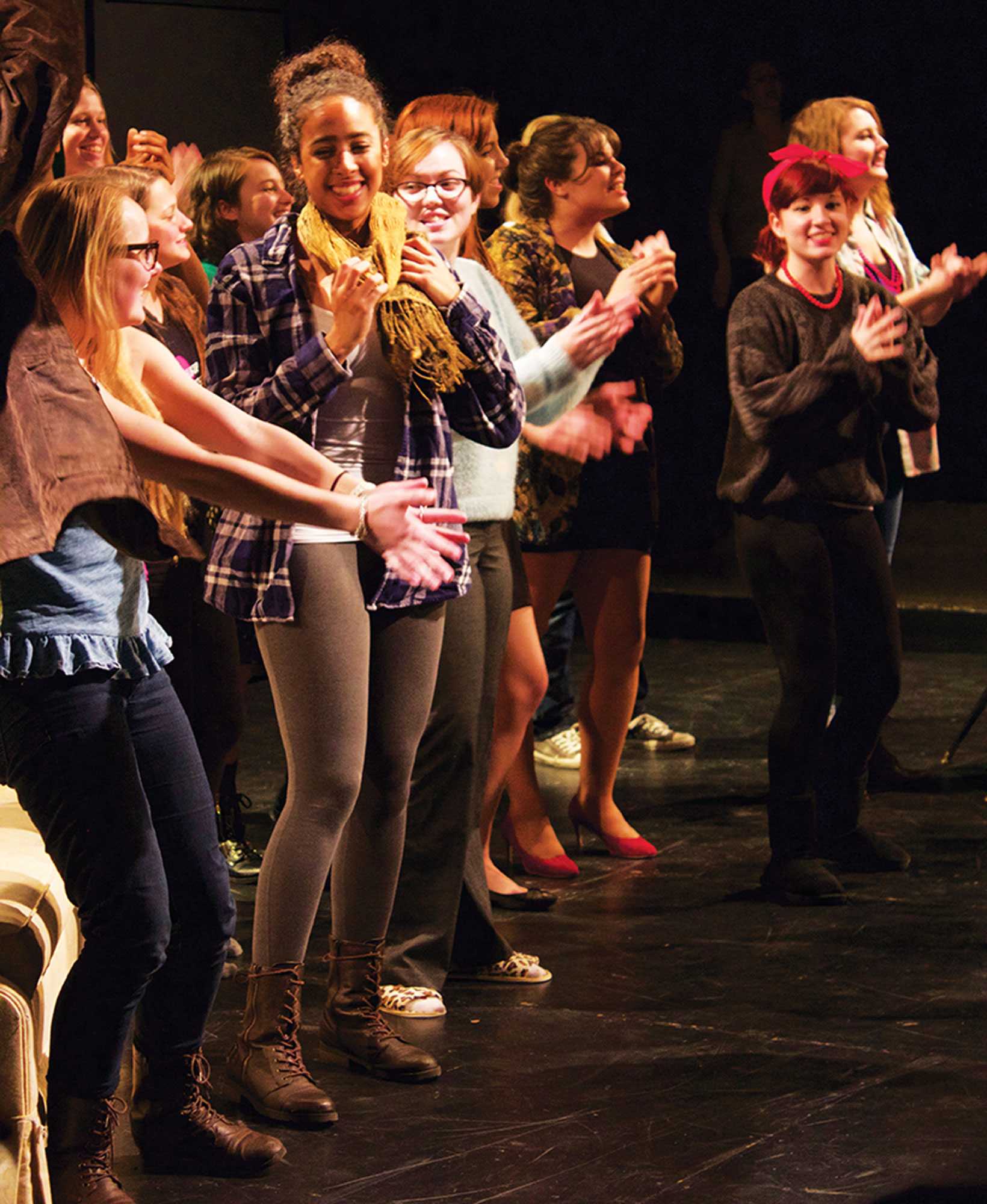On Saturday at 7:00 p.m. students of Appalachian showcased the 24-Hour Arts Festival with one performance. The student-run festival featured six short plays and a dance number. Students wrote, directed and performed in each of the plays that were all written, cast, staged and performed within 24 hours.
“There are a lot of ups and downs,” actress Jenna Tonsor said. “You’re definitely battling the hysteria of not having any sleep, but it’s a lot of fun.”
In the festival, Tonsor played a personification of Twitter in the short play “Antisocial,” by Kathryn Dungan. Tonsor sought to embody Twitter and made an account for the first time in order to get into character. “I had never used [Twitter] before,” she said. “I had to learn all the lingo.”
The play “Antisocial” was a biting social comedy that satirized our generation’s obsession with social media. Twitter, Tinder, Pinterest, Instagram and even Myspace made appearances.
According to Tonsor, many of the plays performed that night were comedies.
Tonsor participated in last year’s festival. The predominantly comedic performances were no accident, she said. “We had predominantly comedic plays [because] last year we had a lot of dramas, which was a [challenge] to watch one after the other,” she said.
However, more than comedies were showcased.
A dark and philosophical play entitled “Bomb Shelter” by Morgan Stewart exposed the audience to a challenging ethical dilemma.
Furthermore, this year marked the first time dance and fight choreography were integrated in the performance, according to junior theater performance major Ian Lawrence.
Ian Lawrence wrote, directed and choreographed the fight scenes in three individual shorts, titled “Struggles with Life (and the People in It),” “Final Boss: Girlfriend,” and “Drunken Boxing.”
“They wanted to get choreography for dance and I got the idea to ask Cody [the event’s organizer]… if I could write some choreo, ‘Can we get some fight scenes in there?’” Lawrence said. “I had just had some fight experience over the summer- I got certified with the Society of American Fight Directors.”
Lawrence was also involved with the festival last year, he said.
“[This year] we cleaned up the process a lot more,” he said. This was the main reason behind smoothness better organization after the event’s organizer had to “pick up the pieces from last year.”
Junior theater education major Jonathan Cody Watkins was the one who organized the event. This year marked the first time such a position was filled.
“It was [a tough job],” he said. “I’m running on three hours of sleep 36 hours ago.”
But the lack of sleep didn’t dampen his spirits.
“My mom’s an organizer, so I love this sort of thing,” he said.
In terms of this year’s performance as compared to last year’s, Watkins said the dance and fight choreography are the biggest changes.
“We didn’t have [dance and fight choreography] last year, and we are so thankful to have it,” Watkins said.
While the performances were stressful and challenging, the participants were unanimously positive in their reactions.
“It’s really rewarding, especially if you learn your lines because it’s really nice to say, ‘Oh my gosh, I learned a script in a night without any sleep and then performed it the next day!’” Tonsor said.
Matthias Kramer, Intern A&E Reporter

